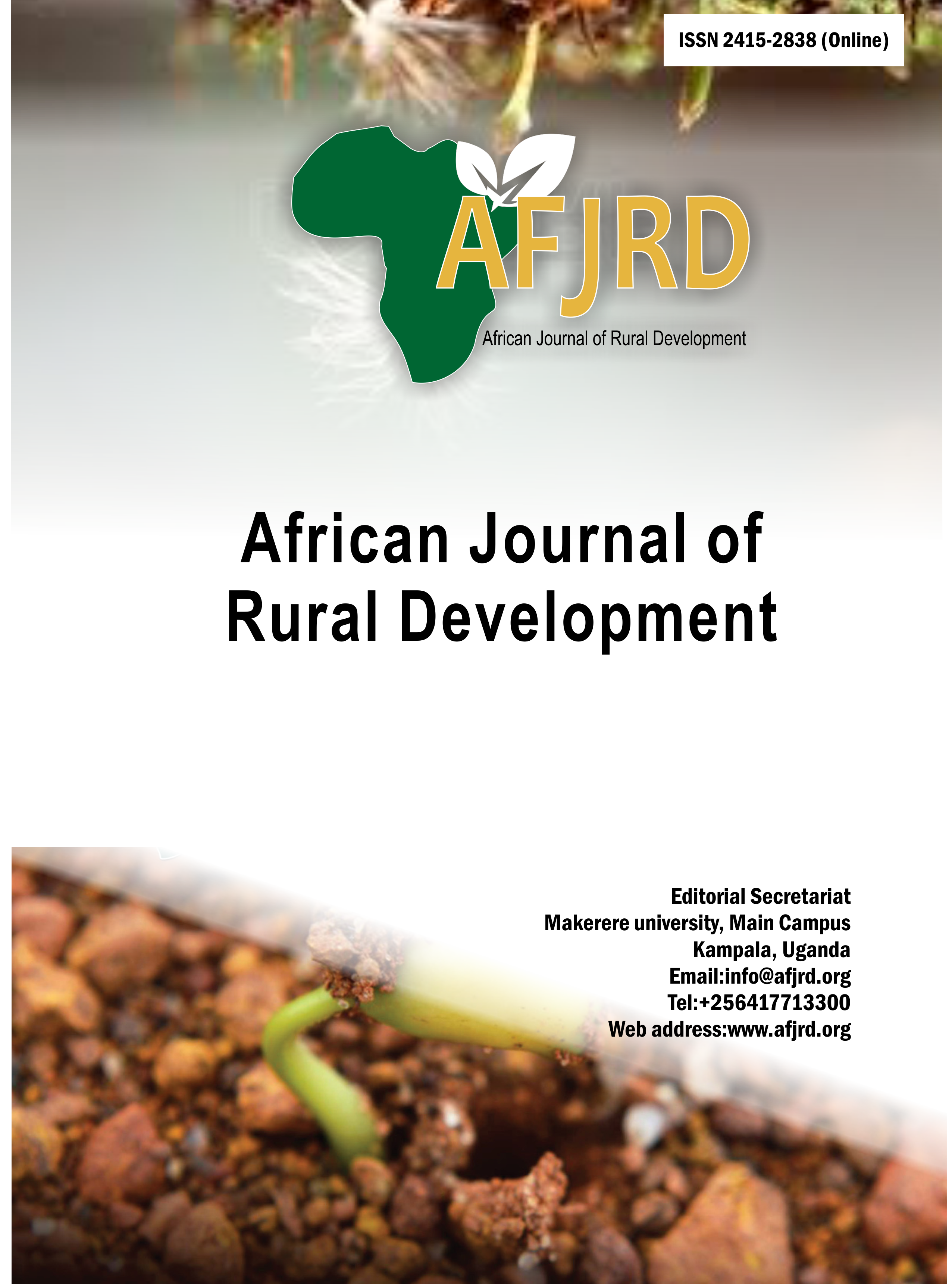Segregation of Resistance in the Ugandan Local Commercial Variety Namche 2 with Already Identified SSR Markers
Main Article Content
Abstract
Rice blast disease is one of the rice diseases with high economic importance. Several resistant genes (R-genes) have been discovered and they occur on all chromosomes in the rice genome. Molecular markers have been discovered to tag specific R-genes that are resistant to this particular disease. This is important in shortening the breeding cycle for resistance to this disease as well as discovering resistance in varieties whose resistance genes have not been well understood. A population of 100 individuals from a cross between NamChe2 a resistant parent and Supa Soroti a susceptible parent was used. This population was evaluated using rice blast isolate from Namulonge and scored were taken using the SES of 0-9. F2 plants were then graded where those that scored 0-3 were considered resistant (R) while those with scores 4-9 were considered susceptible. Eleven SSR markers were tested for polymorphism between the two parents out of which nine markers were polymorphic. The nine markers were run on the population and the chi square goodness of fit test indicated that all nine markers segregated in a normal Mendelian fashion with a 1:2:1 ratio. However, both the regression and chi square test of independence were significant for SSR marker RM21 (R2= 0.125, P<0.001 and χ2 = 8.30, P<0.05).This shows that 12.5% of the resistance observed in the population can be explained by the marker scores. Therefore this specific marker RM21 could effectively be utilized by the breeding programme for marker assisted selection.
Article Details

This work is licensed under a Creative Commons Attribution 4.0 International License.
